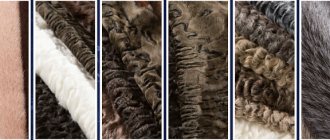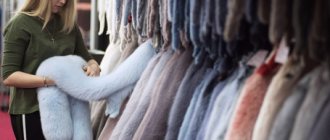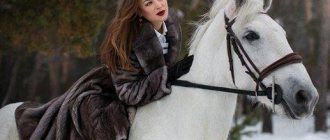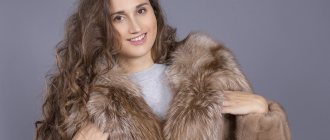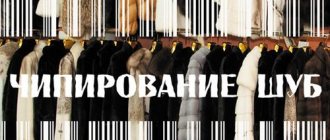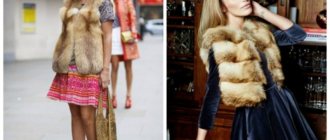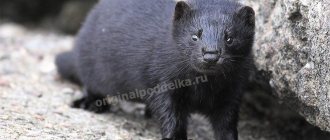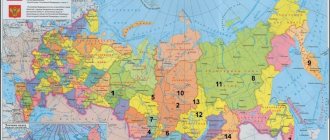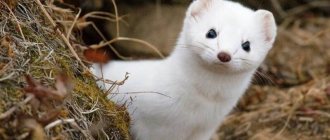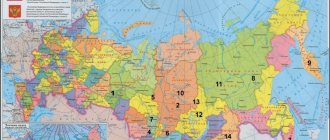Fur farming is, to a certain extent, an unusual branch of animal husbandry, since it involves the breeding of not domesticated animals, but essentially wild animals. Hence the term “fur farming”, which seems to be opposed to classical animal husbandry. At one time, Russia was one of the world leaders and generally a pioneer in this industry. Today, the role of fur farming in the agriculture of our country has decreased significantly, as well as the share of domestic fur in the world market has decreased.
The importance of fur farming as a sector of the national economy
Fur farming (in recent decades the term “fur industry” has also been used) is a branch of agriculture that specializes in breeding valuable fur-bearing animals for the purpose of obtaining their skins. The main areas of interest are such animals as mink, silver-black fox, blue fox, nutria, river beaver, sable, chinchilla, etc.
The resulting skins are an indispensable raw material for light industry enterprises that produce outerwear made from natural materials and other fur products. And although today there are synthetic fur substitutes, the market demand for natural furs is quite high, and therefore the need for fur farms remains.
Captive breeding of fur-bearing animals also contributes significantly to the protection of wildlife. Without systematic artificial breeding of these animals, the existing demand for their skins would have to be met by capturing animals in the wild. This would immediately affect their numbers to the point of being included on the list of endangered species. And a ban on hunting most likely would not help, since the high cost of fur would inevitably attract poachers. For this reason, rabbit breeding and fur farming can be considered a kind of environmental protection industry.
Registration of a mink breeding business
Activities for breeding pedigree animals, as well as the production and use of pedigree products, are licensed. The licensing authority is the Ministry of Agriculture of the Russian Federation. The applicant provides the following documents:
- a statement indicating the licensed activity that the applicant intends to carry out;
- copies of constituent documents and a document confirming the fact of making an entry about the legal entity in the Unified State Register of Legal Entities;
- a copy of the certificate of state registration of the applicant as an individual entrepreneur;
- a copy of the certificate of registration of the applicant with the tax authority;
- a document confirming payment of the license fee for consideration of the application for a license;
- copies of documents confirming the qualifications of an individual entrepreneur and specialists of a legal entity that meet the licensing requirements and conditions, carrying out work on breeding breeding animals.
Fur farming must meet a number of licensing requirements.
Licensing requirements for a fur farm for breeding minks:
- Breeding animals must meet the requirements of the breed standard. The breeder must have documents confirming the origin and assessment of the breeding and productive qualities of the animals.
- It is necessary to carry out annual assessment of breeding animals. Valuation is a comprehensive assessment of animals based on origin, appearance, productivity, reproductive ability and quality of offspring.
- An individual entrepreneur must have the education of a zoo engineer or livestock specialist. If the required professional education is not available, then you should register as an LLC and appoint a specialist with a zootechnical education as the deputy manager.
- Persons carrying out work on breeding breeding animals must also have appropriate education.
- A licensed fur farm must comply with veterinary, sanitary and hygienic standards and rules for keeping animals.
- The standards for technological design of fur farms can be found here.
Within 60 days from the date of submission of the application and documents, the licensing authority makes a decision on granting a license or refusing to grant a license. The license is issued for a period of five years. Scheduled inspections of compliance with licensing requirements may be carried out once every two years.
History of fur farming
In Rus', furs have always been highly valued. Even in ancient chronicles it is mentioned that the vassal peoples paid tribute to the princes of Kyiv not with anything, but with furs. For a long time, martens, fox and sable skins successfully replaced money. Furs were used to pay taxes and duties, they were used to pay for expensive purchases, and even the state often paid “for service to the fatherland” in soft currency. And there was a good reason for this: for example, in the century before last, sable fur was worth more than gold by weight.
Almost all the time until the end of the 19th century, the main flow of fur to the market was provided by hunters and trappers, although since about the 18th century, attempts have been made in Russia to breed fur-bearing animals in captivity. This trade was called “hut” fur farming, since the animals were kept in special huts. In parallel, “island” fur farming developed, becoming most widespread in Siberia and the Far East. This method consisted of capturing animals and then releasing them onto isolated islands on large rivers, lakes and even in the sea. Since the animals had no way of escaping the island, they were relatively easy to catch when they were breeding.
However, hunting and catching wild animals still remained more widespread, since the cost of the skins obtained in this way was much lower. Only from the middle of the 19th century did cellular fur farming begin to develop more or less successfully. The significantly increased demand for fur along with the reduction in the number of wild animals due to large-scale hunting made fur farming a popular branch of agriculture.
However, fur farming became truly large-scale in the 20-30s of the twentieth century. The young Soviet state desperately needed money for industrialization, and fur, along with wheat, was the most popular and profitable product on the world market.
By the mid-1960s, the USSR ranked second after the United States in fur production, and in the early 1970s it became a leader. In the 1980s, the Soviet Union provided a third of the world market for mink and arctic fox skins, about 60% of fox skins and almost 100% of sable skins.
Fur farming in Russia today
Oddly enough, such a valuable and always in demand product as fur could not ensure the stability of the industry in the crisis years of the 90s. While fur production in the world has rapidly increased (over the past decade and a half by at least half), in the Russian Federation fur farming and rabbit farming has decreased by 4 times. So, instead of 600 fur farms that supplied Soviet fur to the world market, today there are less than fifty left. Thus, Russia sharply lost its position in the market, retaining only about 5% of world production.
But the reduction in the number of livestock and the number of farms is a smaller part of the problem. What is more serious is that during the crisis years at least half of the domestic gene pool of fur-bearing animals was lost, including colored minks, which today are in great demand on the market.
Despite systemic problems in the industry, Russia managed to maintain a monopoly on the production of sable fur. However, not everything is so smooth here either. While hundreds of thousands of sable skins are sold through auctions, only 5-7% of them are of cellular origin. Everything else is hunters' trophies. Since residents of remote and frankly poor areas of Siberia do not have many options for earning money, everyone who has access to taiga lands hunts sable. In this form, hunting and fur farming already creates a significant threat to the wild sable population.
Mink breeds
There are about 340 different types of mink colors in the world; animals of the following color forms are most often bred on fur farms.
- The standard dark brown mink
is the main type of mink and occupies a leading position in terms of the number of individuals. Various color variants were obtained from it by crossing. - Black mink
, also known as jet, is a dominant mutation originating in Canada. This is a rare type of mink. Fertility 4-5 puppies. - Silver-blue mink
is a fairly common type of colored mink. Fertility is 6-7 puppies, litter survival rate is more than 90 percent. - The sapphire mink
is the result of crossing an Aleutian mink with a silver-blue mink. Smoky blue color. Fertility is 5-6 puppies, litter survival rate is 87%. - Pastel
is a mink color ranging from light brown to blue-brown, sometimes with a chocolate tint. Fertility – 6 puppies, litter survival rate up to 90% - The American Palomino
is a mink with a hair color ranging from light beige to dark beige. Minks with a yellow and orange tint on the back and contrasting color of the coverts and downy hairs are discarded. Animals of this breed are quite large in size and are highly fertile.
Mink for breeding can be purchased from breeders. The average price of an adult is 14 thousand rubles. A three-month-old mink puppy costs 10 thousand rubles.
Reasons for the decline in fur production in the Russian Federation
One of the main reasons for the collapse of Russian fur farming in the 90s was a radical change in the structure of the economy, in particular the food market. This situation was superimposed on the inability of the managers of fur farms to work in the changed environment.
In Soviet times, fur production had astounding profitability, unmatched by any other branch of agriculture. This was possible due to the low cost of raw materials on which caged fur farming was based.
Due to the fact that all fur-bearing animals with the exception of nutria (and rabbits, which are also often classified as fur-bearing animals) are predators, therefore they should be fed not with grass, grain and vegetables, but with fish and meat. In Soviet times, fur farms were centrally supplied with waste from meat and fish processing plants. In addition, even food species A species is an evolutionarily established set of individuals, characterized by a single... feed (normal fish and meat) were supplied at fairly low prices. Cheap fish was especially abundant.
Today, each fur farm is forced to independently look for feed suppliers, and it is not always possible to agree on reasonable prices. Plus, normal meat and fish have become significantly more expensive, so it has become impossible to use them in the same volumes.
The rise in electricity prices also played an important role. In Soviet times, it was practically free, but today it makes up a significant share of the cost of feed mixtures, which still need to be prepared before serving to animals.
Features of mink breeding
Litter.
For one adult animal, at least 30 kilograms of bedding material should be prepared per year. Straw from awnless cereals, hay or small wood shavings are used as bedding. The litter is changed as it gets dirty. Material damaged by rodents or rotting is not suitable for use.
Feeding.
You should never try to skimp on mink food. Anything that the animal does not receive in terms of food will be reflected in the fur. Using high-quality and balanced food and vitamins will ultimately help you obtain valuable fur of extraordinary beauty. 70% of the beauty of fur is the quality of the food. To feed minks, they use meat, fish, grain, compound feed, fish, bone or meat meal, milk and dairy products, succulent feed, feed yeast, sprat, cake, fish or prefabricated fat. Animal products account for 70 percent of a mink's daily diet. Vegetable feed includes oatmeal or flour, buckwheat, barley, millet, pea, sunflower, soybean, flaxseed cake, carrots, beets, turnips, potatoes, grain vegetables and berries, cabbage, tomatoes. In spring and summer, green onions, young grass, and root crop tops are added. Vegetables are finely chopped or ground in a mixture with other foods. For the normal development of minks, their diet also includes table salt, bone meal, and vitamins. Juicy feed makes up 2-3% of the calorie intake. If minks receive only meat, fish and vitamin preparations for food, then vegetables can be excluded from their diet without causing any damage to development and growth. If the diet is dominated by dry food with a high fat content, then vegetables are necessary. Liver is often used as a vitamin feed, as it is rich in vitamins A and B, iron and copper. It is recommended to feed the liver before the rut, during pregnancy and lactation; it is also fed to young animals that are lagging behind in development. The amount of liver is no more than 10 g per individual per day. When fattening a mink, the main task is to force the animal to eat as much as possible. This is done by developing diets with high energy content in a small amount of feed. One adult mink consumes 0.5 liters of water per day, young animals - 0.7 liters.
Reproduction.
Mink gives birth once a year, in the spring. Animals are ready for breeding at the age of 10-11 months. Mating occurs in March, whelping occurs in late April or early May. The number of puppies is from 5 to 12. About 10-20% of the offspring die, and 10% of females do not give birth at all. The young are separated from the female at approximately 40 days of age.
Prospects for the fur farming industry
With all the existing problems, even today fur farming in Russia can be profitable. The few surviving farms not only continue to operate, but are also expanding. If you have entrepreneurial talent and the ability to negotiate with suppliers and buyers, the profitability of a fur farm will be about 30-40%, which is not bad at all.
Considering that in the West, where the cost of all types of raw materials is even higher than in Russia, the fur farming industry is growing and expanding, there is no doubt that in the foreseeable future a fur farming renaissance will also begin in our country. The successes of European and North American fur farmers are based primarily on the optimization of work processes, in particular maximum automation and mechanization. By minimizing labor costs, you can significantly increase the profitability of the farm, even in the face of rising feed prices.
As the demand for fur grows around the world, despite protests from animal rights activists, the prospects for domestic fur farmers are also increasing. It is noteworthy that the growing competition from Chinese producers in fact cannot pose a real problem for the development of fur farming in our country. In this industry, the climate factor is of great importance: the further north the fur farm is located, the better quality products it produces. The only question is when Russian fur farmers will finally master modern technologies in the industry. As soon as this happens, the volume of domestic fur production will increase sharply.
Cheap import
The problem associated with dumping on the part of Asian markets was also voiced by the head of the Kaliningrad region at a meeting of the State Council on the agro-industrial complex. He asked the president to instruct the Federal Customs Service or take some measures to limit the import of excessively cheap fur raw materials within the framework of the Eurasian Economic Community. The head of state agreed that this proposal needed to be worked out.
“The increase in the supply of imported surplus fur at dumping prices to the Russian market was facilitated by the reduction and zeroing of duties on fur raw materials in 2021,” explains Nadezhda Zubkova. “Therefore, we really hope that the state policy regarding the import of fur products will change. If we talk about VAT, we should not forget that value added tax is paid not only by domestic producers, but also by importers when importing products. And reducing the rate from 20 to 10 percent will play into the hands of foreign fur farmers. We offer another solution to the VAT problem. It is necessary to significantly increase the maximum annual income of payers of the single agricultural tax, who can receive an exemption from VAT. The Parliamentary Association of North-West Russia came up with such a proposal - to raise the bar to 800 million rubles - at the end of last year. The implementation of this initiative will truly stabilize the situation, preserve rural jobs and the infrastructure of villages for which fur farms are “city-forming”.
Organization of fur farming
The creation of a fur farm should begin not with calculating the cost of production and the profitability of the enterprise, but with studying the conditions in which the farm will be created. In particular, the following points need to be analyzed:
- Availability of labor. In a completely remote area, finding personnel will be problematic, and in a densely populated area, the cost of labor will be higher, which will affect the profitability of the enterprise. In addition, work in fur farming requires certain training, so the staff will have to hire people who are trained, and not local village alcoholics.
- Available funds. Fur farming is a fairly expensive business with a high entry barrier. To quickly reach large production volumes, you will have to purchase several hundred or even thousands of animals. The cost of animals and the preparation of conditions for them will cost tens of thousands of dollars. If you start with minimal investments, then promotion will take many years.
- Availability of livestock buildings. Many fur-bearing animals require special enclosures or cages. It’s good if there is an opportunity to buy a bankrupt fur farm, where all this is already available. Otherwise, you will have to build from scratch.
- Possibility of purchasing feed. As practice shows, the profitability of a fur farm directly depends on whether it is possible to find suppliers of cheap meat/fish by-products.
- Climatic conditions. You should always remember that not all fur farming objects are adapted to cold weather. If for a sable, the colder the better, then ferrets, for example, are heat-loving animals.
Choosing a location for a fur farm
It is not recommended to neglect the choice of land, since the well-being of animals and the quality of their fur largely depends on it. The site should be flat, but have a slight slope and sandy or sandy loam soil that absorbs moisture well. It is impossible to build a farm in a lowland with constantly damp clay soil, since due to the increased humidity and poor ventilation of the area, the animals will get sick more. If there is no other choice, then the area should be drained, and the sheds should be built with a floor at a height of 45-50 cm above ground level. This way it will be possible to prevent a decrease in the quality of fur farming products.
When choosing a site, it is important to maintain an optimal balance between protection from cold winds and normal air circulation. If the farm is planned in a densely overgrown area, then the trees and bushes should be cut down, leaving only a small part of them along the perimeter of the farm, and preferably only on the north side. There should be no trees or grass directly on the territory of the complex, as they interfere with the organization of mechanization and prevent high-quality disinfection of the soil.
You should also always remember that a farm cannot be built near cattle burial grounds, landfills, wastewater treatment plants and other sources of pollution and infections. The nearest livestock farms should also be at least 300 meters away, and public roads should be at least 30 meters away.
Fur farm layout
When creating a fur farm, it is important to follow a clear layout, provide technical passages and provide all production facilities with a hard floor covering. It is important that rainwater does not linger on the territory of the complex, but leaves immediately. This is why a site with a slightly sloping surface is selected. For the same purposes, rain canals are laid on the site.
Objects of fur farming (mink, fox, sable, etc.) are kept in individual cages combined into sheds. On fur farms, multi-row sheds with a gable roof are practiced. The most commonly used scheme is two, four and six rows. Sheds are oriented in the meridional direction.
In addition to blocks with animals, staff quarters, sheds for equipment, feed storage facilities, a feed shop, a veterinary center, a slaughterhouse, a skin processing station and other utility rooms are also being built on the territory of the complex. Fortunately, you don’t need to invent anything: there are standard designs for fur farms, designed so that the work of the farm can be automated and mechanized to the utmost.
